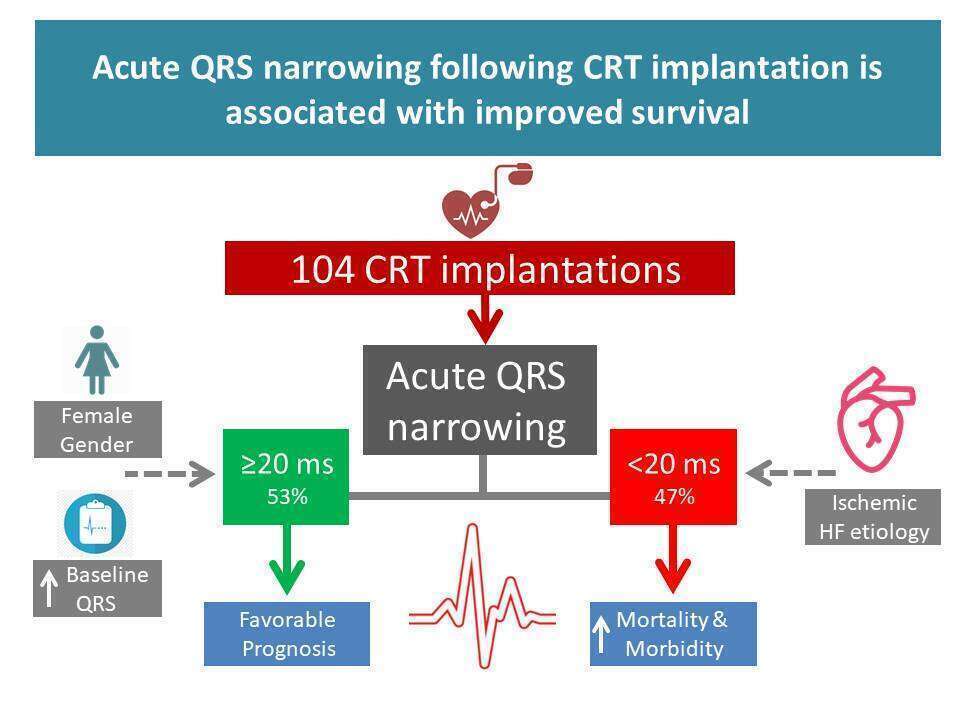
Acute QRS narrowing following CRT implantation is associated with improved survival
2Jesselson integrated heart center, Shaare Zedek Medical Center (SZMC), Israel
3Faculty of Medicine, Hebrew University, Israel
Introduction: Cardiac resynchronization therapy (CRT) is used to treat symptomatic patients with heart failure (HF), left ventricular systolic dysfunction and prolonged QRS on surface ECG based on current guidelines. Nevertheless, about 30% fail to show symptomatic improvement following CRT implantation. Acute post-inplant QRS narrowing may reflect correction of cardiac asynchrony, and thus may assist in predicting response to treatment.
Aims: To investigate QRS duration (QRSd) reduction following Cardiac Resynchronization Therapy (CRT) implantation, it`s associated variables and the impact on survival.
Methods: The study population included HF patients who received CRT, with > moderate left ventricular dysfunction, and baseline QRSd ≥ 130 ms. Death from all-cause and the composite of death or HF hospitalization were acquired for outcome. Pre- and post-implantation electrocardiographs were analyzed using digital clippers and signal-lead manual measurement compared to automatically calculated values.
Results: For 104 patients included, mean age was 67 years and 25% were females. On average QRSd declined post CRT by 20.2 ms (SD 24.7 ms). In 53% it declined by ≥ 20 ms (acute QRSd narrowing). Among 55 patients with Acute QRS narrowing, 18/20 (90%) and 21/31 (68%) continued to display shortened QRSd 1-6 weeks and 3-12 months following implantation, respectively. Female gender and baseline QRSd predicted acute QRSd narrowing. During an average follow-up of 41 months, 29/104 (28%) died and 50/104 (48%) met the composite outcome. Acute QRSd reduction (≥20 ms) (p=0.04), and relative QRSd reduction (%) as a continuous variable (HR 0.974, CI 0.958-0.991, p=0.002) associated with improved prognosis. In multivariable analysis including comorbidities and cardiac history, prolonged PR interval (HR 1.015, CI 1.008-1.021, p<0.001) and acute QRSd reduction (HR 3.243, CI 1.593-6.603, p=0.001) were significant and independent predictors of the composite outcome.
Conclusion: Acute QRSd reduction ≥ 20 ms is independently associated with favorable long-term outcome following CRT implantation. Female patients with prolonged baseline QRSd are more likely to decline QRSd.

Powered by Eventact EMS